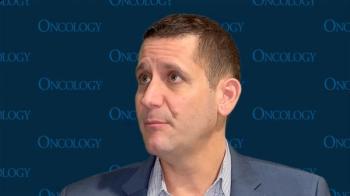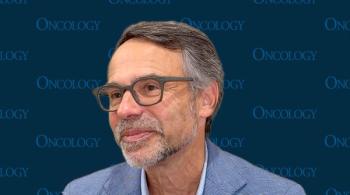
Oncology NEWS International
- Oncology NEWS International Vol 11 No 9
- Volume 11
- Issue 9
Imatinib Inactive in Sarcomas That Lack C-KIT/PDGF
ORLANDO-The tyrosine inhibitor imatinib mesylate (Gleevec) is active in gastrointestinal stromal tumors (GISTs) but not in other soft-tissue sarcomas not characterized by C-KIT or PDGF-R expression, the targets of imatinib, Ian R. Judson, MD, said at the American Society of Clinical Oncology annual meeting (abstract 1609).
ORLANDOThe tyrosine inhibitor imatinib mesylate (Gleevec) is active in gastrointestinal stromal tumors (GISTs) but not in other soft-tissue sarcomas not characterized by C-KIT or PDGF-R expression, the targets of imatinib, Ian R. Judson, MD, said at the American Society of Clinical Oncology annual meeting (abstract 1609).
Dr. Judson reported phase II data on behalf of the European Organization for Research and Treatment of Cancer (EORTC) Soft Tissue and Bone Sarcoma Group. He is a medical oncologist at the Royal Marsden Hospital, London.
The multicenter study enrolled 27 patients with GIST and 24 with CD117-negative non-GIST soft-tissue sarcomas. (CD117 is a marker for KIT.) GISTs were required to be KIT positive. All patients had locally advanced unresectable and/or metastatic disease. About half of the GIST patients (52%) and most of the non-GIST patients (92%) had received prior chemotherapy.
The non-GIST soft-tissue sarcoma patients tended to have pulmonary metastases, but few of the GIST patients had lung lesions. Liver metastases were present in the minority of the non-GIST population but in most GIST patients.
Patients came off treatment quickly in the non-GIST group but tended to continue imatinib for long periods in the GIST population.
The most common side effects were anemia, granulocytopenia, edema, fatigue, rash, and nausea. Grade 3-4 toxicities were rare and generally not a problem at the dose used (800 mg daily). Grade 2 anemia, edema, and fatigue were relatively common.
"It was our clinical impression that some of the toxicities we observed tended to become less severe with prolonged treatment. This was the case for edema, where gradually the grade 2 toxicity faded away leaving just a little grade 1 periorbital edema, which some patients never lose," Dr. Judson said. Skin rash similarly occurred up to grade 3 toxicity levels but tended to disappear with time. Nausea also tended to resolve over time.
The overall response rate was 71% in the GIST patients, including one complete remission and 18 partial remissions. There were no objective remissions in the other sarcomas.
"It’s notable that only three GIST patients (11%) had disease progression during the first 8 weeks of therapy, whereas 71% of the other sarcomas progressed during that time," Dr. Judson said. He noted that 73% of the GIST patients were progression free at 12 months.
The median time to response was 4 months. "We tended to see relatively rapid liquefaction, tumors becoming less dense on CT scan, but the overall dimensions did not change very much during that first 2-month period in many patients. Then we saw a very slow reduction in the size of the lesions with time. Sometimes objective response was not achieved until about a year," he said.
Articles in this issue
about 23 years ago
Tumor-Specific Idiotype Vaccines Promising in B-Cell Lymphomasover 23 years ago
Childhood Survivors May Not Know Their Past Rxover 23 years ago
Pemetrexed/Gemcitabine Promising in Advanced Pancreatic Cancerover 23 years ago
Physician Experience Predicts HIV-Related Mortalityover 23 years ago
Eloxatin With 5-FU/LV Approved for Recurrent Colon Cancerover 23 years ago
Comprehensive Geriatric Evaluations Improve Careover 23 years ago
Nordion’s Monte Carlo Dose Calculation Software Approvedover 23 years ago
No Strong Link Between Breast Cancer Risk and Pollutantsover 23 years ago
Task Force Recommends Screening for All Age 50 and OverNewsletter
Stay up to date on recent advances in the multidisciplinary approach to cancer.
















































































